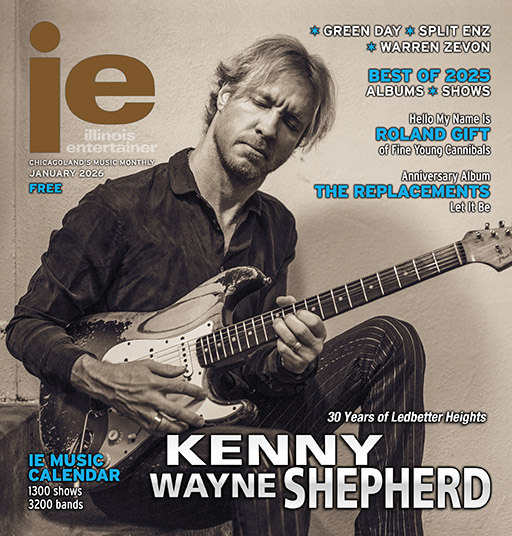Is Journalism Dead?
In 1991, I met writers Michael Miner and John Conroy after they gave a presentation on independent journalism at an adult-education seminar.
In those pre-Internet days, The Reader was the thick, independent weekly everyone picked up on Thursday afternoon, so they could plan their weekend. Miner wrote its popular “Hot Type” media column, and Conroy was an investigative staff writer and author of the 1987 book Belfast Diary: War As A Way Of Life. His 1990 Reader cover story, “House Of Screams,” broke the John Burge, Area 2 police-torture scandal.
And I was a filmmaker and waitress, trying to decide which journalism grad school’s offer I should accept: Northwestern or Columbia College. Miner said I’d probably get a better job down the line if I went to North-western’s Medill School Of Journalism.
So I went to Medill – where one of my classmates was Mo Ryan, editor/publisher of the fan-zine Steve Albini Thinks We Suck. Ryan is now the TV writer for the Chicago Tribune.
But I lasted only a week; I knew I couldn’t stay when one of the professors asked if any of us thought we’d never be an editor, and I was the only one who raised their hand. That same professor also predicted newspapers were on their way out and showed us a study that proved it.
I earned a master’s degree in public affairs reporting at Columbia College, where we spent an afternoon at the now-defunct City News Bureau, the cooperative news agency that provided news to member media outlets. That day, Managing Editor Paul Zimbrakos told us there were more students in journalism school than working journalists, and to get out now. I didn’t listen (in fact, I did an independent study with Chicago Sun-Times media critic Robert Feder, who helped me land this column in 1994).
I went on to write for local newspapers and magazines, and did the Reader‘s “Days Of The Week” column for eight years.
I saw Conroy and Miner chatting between sessions at February’s Chicago Journalism Town Hall at the Hotel Allegro Chicago. Eighteen years later, it felt like journalism was indeed dying – especially when event architect and former WBEZ Program Director Ken Davis kicked off the event with “My name is Ken Davis, and I’m a recovering journalist.”
His panel included Miner, who still does “Hot Type.” But the Reader was purchased in 2007 by Creative Loafing, which shrunk the paper into a thin tabloid, fired a large chunk of the staff, and filed for Chapter 11 bankruptcy protection last year.
The firings included Conroy, who continued to pursue Chicago police torture and wrote the 2000 book Unspeakable Acts, Ordinary People: The Dynamics Of Torture. He has won countless awards, including a Mac-Arthur grant, and his articles were cited in Illinois Supreme Court cases that helped free four death-row inmates.
But he was let go by the Reader in 2007 – shortly after it published his final police torture article. One day later, the City Of Chicago agreed to a $20 million settlement with four former death-row inmates who claimed Burge and his men tortured them. It is doubtful that would have happened without Conroy’s heroic work. Now, he appears occasionally on WBEZ-FM (91.5).
I lost the Reader gig in 2004, amid a redesign sparked by the local launch of Time Out magazine. Now, I write part time and teach yoga full time.
I was in good company at the Town Hall, where the audience was full of current and former journalists – as was the panel, which ranged from Chi-Town Daily News founder Geoff Dougherty to former Sun-Times reporter Lee Bey.

The subject was the future of journalism, which has been shedding reporters like bad mortgages. John Callaway said newspapers as we knew them are dead, and it was suggested publications such as the Huffington Post that use and comment on content from traditional print media should pay for its use. Panelist Carol Marin called it “content without compensation.”
Huffington Post‘s Chicago Editor, Ben Goldberger, said his stories drive “tons” of readers to the papers’ Web sites and pointed to the staggering number of comments the stories generate. “It’s not just news,” he said. “It’s a dialog.”
Callaway suggested a foundation be created that pays journalists to report the news, at least until a new model is found. “It is about creating an environment where journalism could flourish,” said panelist Feder. This model would require editors and infrastructure as well as beat and investigative reporters – which would be expensive.
Andrew Huff pointed out Gapers Block, which uses volunteer writers, costs him just $100 per month for the server. Dougherty also runs his nonprofit Web site on a shoestring.
Audience member and former broadcast journalist Carolyn Grisko suggested readers make micro-payments to read articles, or that newspapers adopt the cable-TV subscription model.
But the best moment came when the Tribune‘s Eric Zorn noted that someone in the room had been unfavorably live-Tweeting the proceedings, and asked him to speak up. It was Angryjournalist.com founder Kiyoshi Martinez, who said newspapers must reinvent how they advertise. Instead of burying tiny ads on a busy Web page, they should copy Gawker.com, whose ads are large, singular and hard to miss – not to mention profitable.
The Town Hall airs Friday, April 3rd at noon on CAN TV21. Visit http://chijournalismtownhall.com for more. Conroy’s police torture articles are archived at www.chicagoreader.com/policetorture/.
– Cara Jepsen











